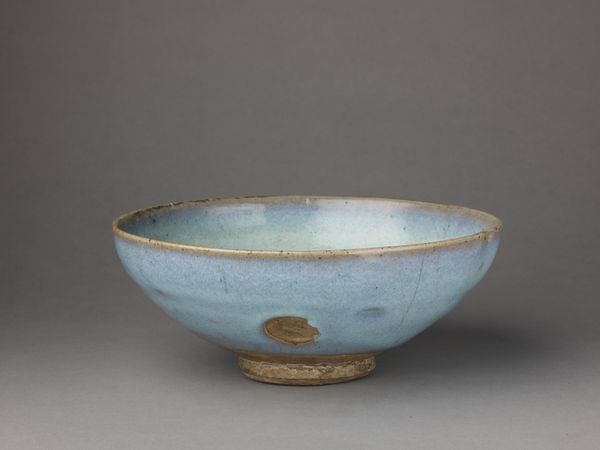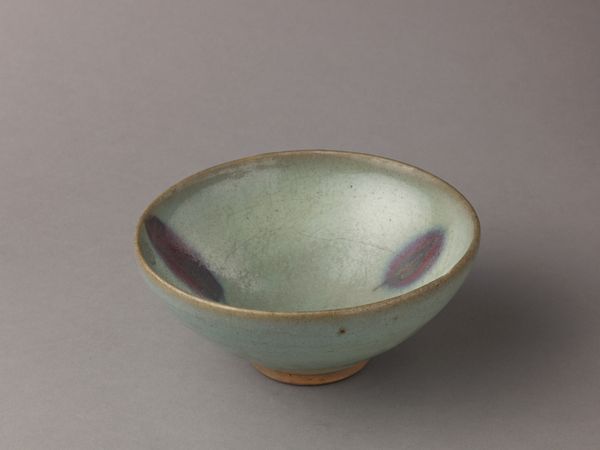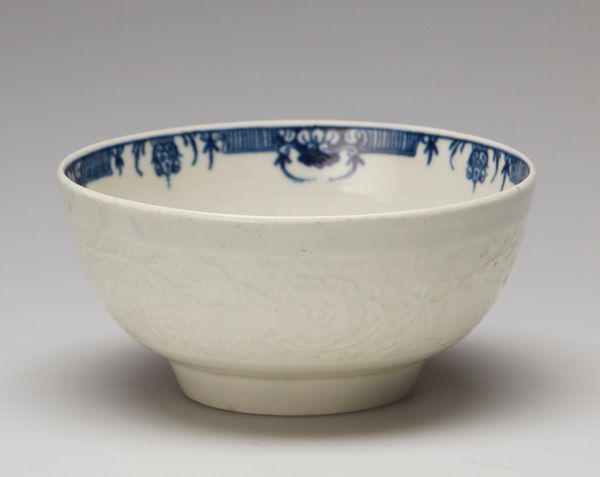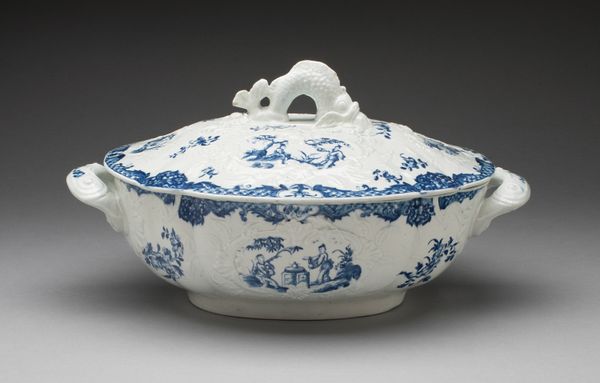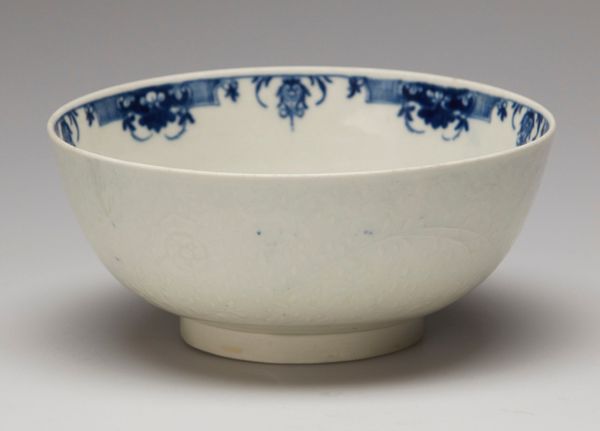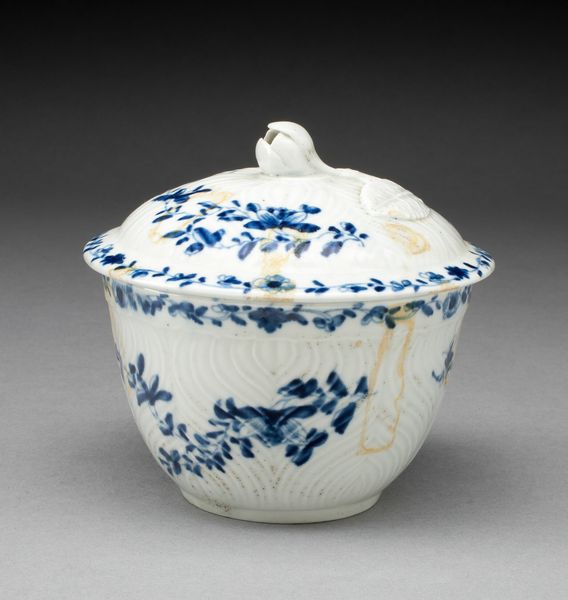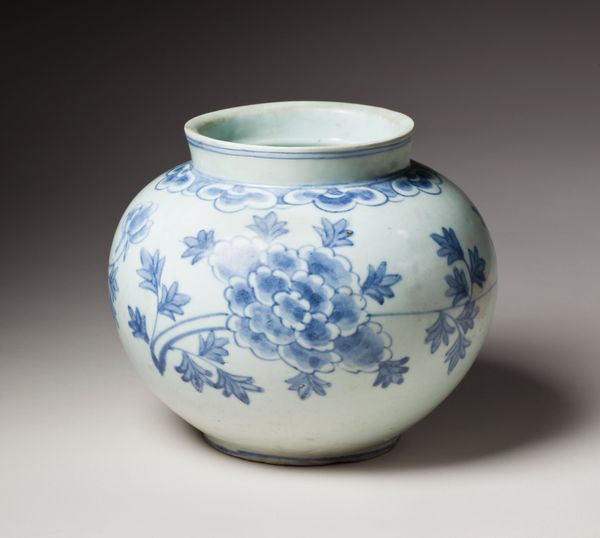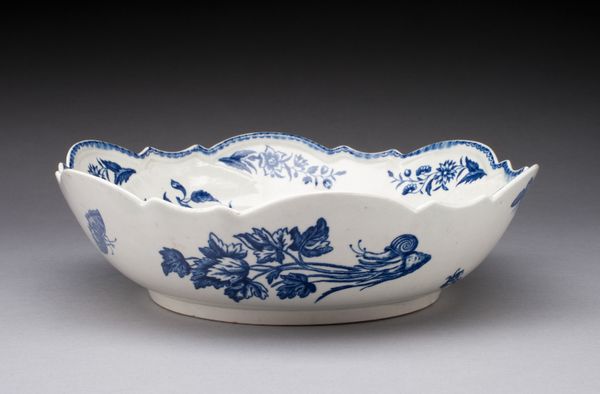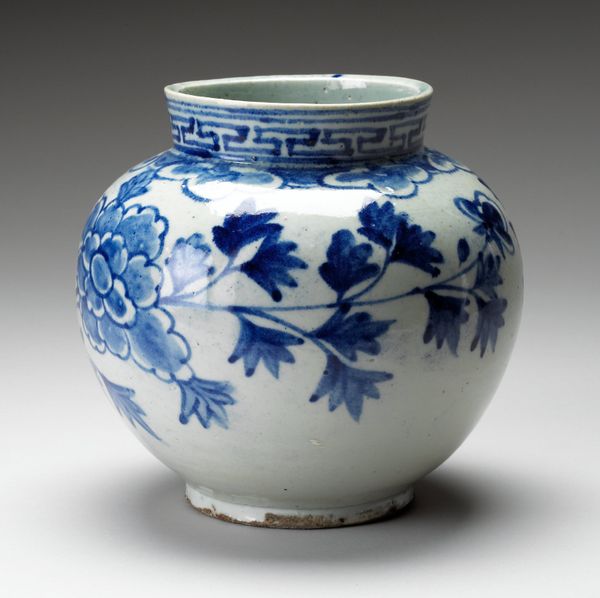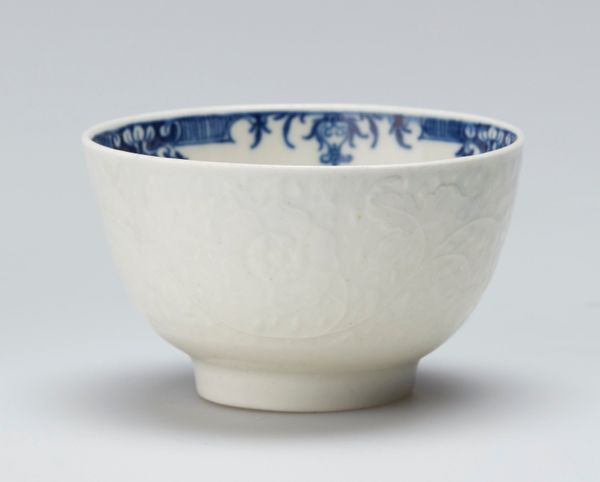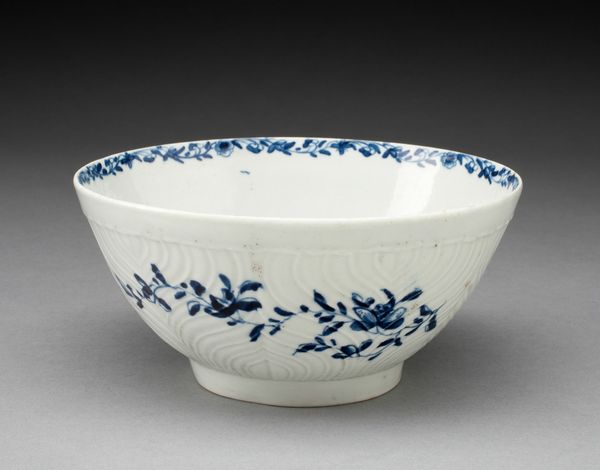
Bowl in the Shape of a Paulownia Leaf 1850 - 1899
0:00
0:00
ceramic, wood
#
asian-art
#
ceramic
#
japan
#
24_meiji-period-1868-1912
#
wood
Dimensions: W. 8 1/4 in. (21 cm)
Copyright: Public Domain
Curator: What a charming piece. We're looking at a ceramic bowl crafted to resemble a Paulownia leaf. It’s believed to be the work of Nin'ami Dōhachi II, dating sometime between 1850 and 1899, during the Meiji period in Japan. Editor: My first thought is just how delicately imperfect it is. The organic shape, the slight wobble in the legs, it has this wonderful feeling of handmade artistry. Curator: Absolutely. This type of work really speaks to the rising merchant class during the Meiji era and the increasing desire to integrate art into everyday life. Functional objects with artistic merit became incredibly popular. The Paulownia leaf itself carries cultural significance, often associated with good fortune and imperial imagery. Editor: I’m wondering about that creamy white glaze on the exterior, juxtaposed with the almost sky-like blue inside. What kind of dialogues might the piece try to open in relation to color and power dynamics? Curator: It's interesting you mention power. The adoption of these symbols—once highly controlled by the imperial court—into more common objects speaks to the evolving socio-political landscape of the time. The very materiality—ceramic, as opposed to something more precious—suggests a democratization of these emblems. Editor: I also wonder, how are we seeing the symbolism being reinvented now? Considering global circulation, is this object simply seen for aesthetic charm, devoid of its political potential, or does that historical weight still cling to the object as it's viewed across different contexts? Curator: I think it depends on the viewer, of course. The beauty and craftsmanship are universally appealing, but the deeper meanings are there for those who choose to engage with them, a historical fingerprint subtly imprinted on an object of everyday use. Editor: Right. Its continued presence within collections allows an active space for dialogue between tradition and more modern understandings. Curator: Indeed, a quiet yet compelling example of how art reflects and shapes the social and cultural currents of its time.
Comments
No comments
Be the first to comment and join the conversation on the ultimate creative platform.
